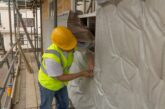
Insulation specialist Actis is backing a call by Citizens Advice for urgent investment to tackle draughty housing – which it says will save lives, protect health, reduce fuel poverty and help the UK achieve its net zero goal.
The report says improving home insulation alongside other energy efficiency measures could save the NHS £2 billion a year by preventing 6,000 excess deaths annually, cut childhood asthma cases by 650,000 and save residents a total of £24 billion by 2030 – up to £951 a year per head.
The charity is calling for urgent public and private investment to upgrade 13 million of the UK’s 15 million most energy inefficient homes – which house 31 million people – to EPC level C.
It says the retrofit would pay for itself within ten years despite the upfront costs, generating £40 billion and reducing CO2 emissions by 33 million tonnes, or 5%, by 2030.
The report follows a similar call from the Building Research Establishment (BRE) earlier this year, whose report – The Cost of Poor Housing by Tenure in England – suggested poor housing could be costing the NHS £540 million a year.
Actis UK and Ireland technical director Thomas Wiedmer cited the importance of ‘fabric first.’

But he says the solution is not as simple as merely slapping insulation into the properties identified both by the BRE and Citizens Advice. It needs to be part of a balanced approach, ensuring it doesn’t lead to damp and mould, with retrofitters needing to take into account specification PAS 2035:2019, which champions a whole house approach including a ventilation strategy.
“Although it is a guide for all government supported projects including those under the Energy Company Obligation ECO, it can be used on a voluntary basis for private homes outside these schemes,” he said.
“The standard champions a matrix approach in which each individual measure is examined in the context of the whole house. This is because one action might have unintended consequences elsewhere in the property – such as the appearance of moisture or condensation.
“For example, while on the surface it may seem sensible to insulate all external walls to the best possible U-value, this could have unintended consequences elsewhere. Where the ceiling joists meet the walls, in some scenarios, can create a weak thermal bridge. This might lead to moisture build-up and mould growth so it may, counterintuitively, be better to use less rather than more insulation.”
For more from Actis, visit ACTIS Insulation – Tomorrow’s insulation today (insulation-actis.com).







